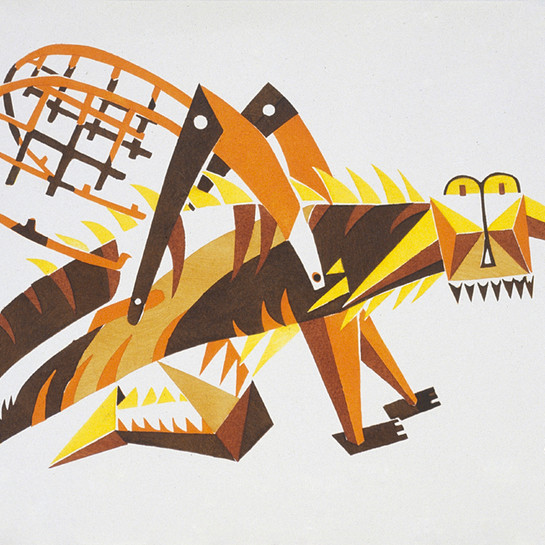Artist Unknown
Snuff Bottle
- 1908-1911
- Glass
- China
- Presented by Mr Yeung Tat Che, 1998
- 96 x 50 x 50mm
- 98/35.1-2
Snuff bottles were used to contain powdered tobacco, which was often combined with aromatic spices. Snuff-taking was regarded as a remedy for headaches, colds and stomach complaints and was widely used in Europe by the time it was introduced to China in the mid-sixteenth century. In Europe, snuff was stored in small boxes, but the Chinese designed bottles to keep the powder dry and fragrant in humid conditions. These were decorated, some elaborately, and the patterns and motifs used could be symbolic, sometimes conveying a special message between a giver and recipient. The small bottles were easy to hold in a hand or pocket and came in a variety of shapes, some representing vegetables and fruit, others animals, human figures or simple geometric forms. Typical materials included glass, lacquer, metal, jade, ivory and coloured gemstones. This bottle, with its entwined vines, tendrils and buds, was carved using a cameo technique. The design is carved in high relief from blue glass, revealing the primary layer of white glass underneath. This bottle is one of 44 presented to the Gallery by Mr Yeung Tat Che in 1998.
(Turn, Turn, Turn: A Year in Art, 27 July 2019 – 8 March 2020)
Exhibition History
Art Detectives, 20 October 2006 - 25 March 2007
Snuff is a kind of powdered tobacco (the stuff they put in cigarettes) to be sniffed up the nose - it’s a bit disgusting, so don’t try this at home! In China, where these bottles are from, snuff was mixed with mint and other scented plants, and was thought to help treat various mild illnesses.
Most of these bottles are made of polished glass, with the coloured top layer carefully ground back to make these incredible designs.


